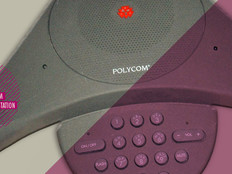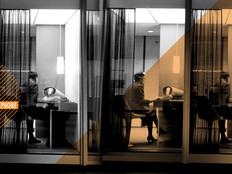How a Phone System Revamp Can Make a Business More Efficient
Employees at Ada Technologies Inc. rarely relied on their phones. The Honda parts maker doesn’t have a customer service center, and most of its 500 workers spend more time on the manufacturing floor than at their desks. Yet, even with minimal needs, the problems with ATI’s phone system became hard to ignore.
For starters, the functionality was elementary. Users could make and receive calls and retrieve voicemail messages, but the system featured a version of caller ID that displayed the caller’s name and phone number only after the user picked up the line. “What good does that do after you answer?” asks Kelly Richards, the supplier’s assistant senior manager.
Today, with enhanced infrastructure, a new phone solution and improved training, ATI’s upgraded system has transformed the Ohio-based company. The technology allows for improved capabilities such as regular broadcasts throughout the building and transferring voicemail via email.
“They went straight into the 21st century,” says Ozzie Vargas, a CDW collaboration solution architect who helped design the upgrade.
For years, such a system seemed out of reach for ATI.
SIGN UP: Get more news from the BizTech newsletter in your inbox every two weeks!
When Steve Kauffman, ATI’s network administrator, learned in 2010 that the manufacturer of its previous system was discontinuing the company’s line of phones, he figured the announcement meant it was time for a replacement. “If it broke down, I wasn’t sure we would be able to get it fixed or get any parts to repair it,” he says.
Further complicating matters, if ATI expanded its manufacturing center or needed more desks, the company wouldn’t be able to add phones to accommodate the growth. “Any kind of expansion was pretty much out of the picture,” he says. “With no parts available, we were at the max.”
But with a slowdown in car sales, even those risks didn’t justify an upgrade. “We had a phone system; it was working,” Kauffman says. “There was always the ‘what if,’ but it’s kind of hard to sell people on replacing something that works.”
Plan for a Future with New Network Equipment
Still, Kauffman made plans for a possible replacement and discussed an upgrade with his CDW account executive, Dominic Wisler. When ATI leaders received approval to move ahead, Kauffman and Wisler assembled a solution with Vargas and CDW Senior Consulting Engineer Corey Buskirk.
First, the CDW team met with representatives throughout the company to learn about ATI’s communication and collaboration challenges. “We took a list of pain points and gave them a solution to alleviate those,” Buskirk says.
Then, they took the initiative to replace an aging private branch exchange system and morphed it into a project to enable workers to use voice, video, instant messaging and presence tools for enhanced collaboration.
To do this, CDW created a customized system consisting of Cisco Systems’ Unified Communications Manager (CallManager); Singlewire Software’s InformaCast IP paging; Cisco Unity Connection; Cisco IM and Presence Service; Cisco 8841, 8851 and 7841 phones; and Cisco switches.
“It’s a total revamp as far as their collaboration platform is concerned, because they were used to having just dial phone and voicemail, and that’s it,” Vargas says.
Gain Efficiencies Through Communications Technology
Kauffman spent six years thinking about a phone system upgrade, so when it came time for improvements, he knew exactly what he wanted.
Beyond the basics — making and receiving calls, voicemail, and caller ID that worked before the user picked up the phone — his wish list included modern features, such as an automated attendant that would route calls to the appropriate departments, a voicemail-to-email function and single-number reach so users’ calls would ring simultaneously at their desks, mobile phones, computers and tablets.
Kauffman previously used Cisco firewalls and switches and knew Cisco was a leader in IP phone technology. “All the Cisco products I’ve had, you pretty much put them in and forget about them. They just work,” he says.
Still, he wanted competitive quotes to ensure he was making the right choice. He considered smaller companies, but he worried about their long-term customer support. “With CDW and Cisco both, we know that if the guy working with us today leaves, there’s going to be somebody else,” he says.
Kauffman’s research led him back to Cisco. When he asked Wisler for a recommendation, the answer only reinforced his decision. “I was leaning toward Cisco already, and CDW said, ‘We have other options available, but Cisco is what we think is best,’” Kauffman says.
CDW customized a solution to meet ATI’s specific needs. It also handled the price negotiation, purchase and contract. Buskirk spent a few days working side by side with Kauffman, explaining the system’s features, helping configure the technology and testing to ensure everything functioned as planned. “CDW did all the heavy lifting,” Kauffman says.
“There were things that I either don’t have knowledge of, or if I do, it’s stuff that you only need to do every 10 years,” Kauffman adds. “Having somebody like CDW that does it regularly — I don’t think there’s any way to go without that kind of expertise.”








